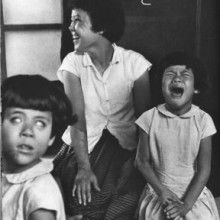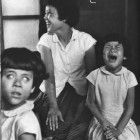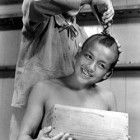About
Ken Domon (25 October 1909 – 15 September 1990) is one of the most renowned Japanese photographers of the 20th century. He is most celebrated as a photojournalist, though he may have been most prolific as a photographer of Buddhist temples and statuary. After WW2 Domon started with documenting the aftermath of the war, focusing on society and the lives of ordinary people. He became known as a proponent of realism in photography, which he described as, "an absolute snapshot that is absolutely not dramatic." He was a prolific contributor to photographic magazines, revived or started afresh through the early 1950s. With Kimura, Hiroshi Hamaya and others, he rejected posed and other artful photographs; in his polemics in the photographic magazines, Domon was the most forceful exponent of this view. He famously defined his goal as "the direct connection between camera and motif. In 1957 Domon was moved to visit Hiroshima in order to photograph city's survivors. He is said to have worked there with his characteristic deliberation, method, and systematic selflessness, as he photographed the advanced skin-grafting techniques, the lives of the damaged families, and the games of blind children. It is also said that he often wept while he worked.










